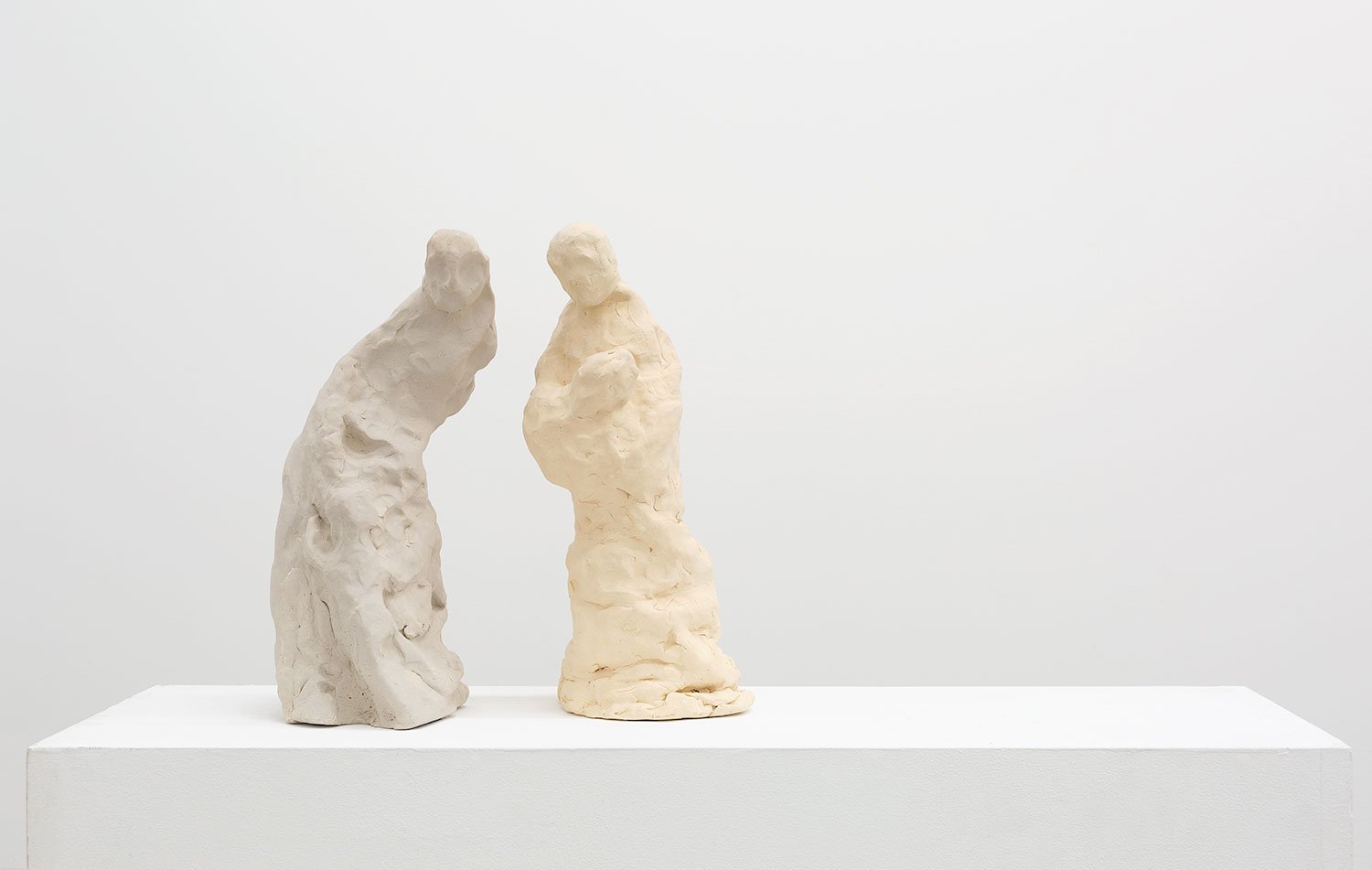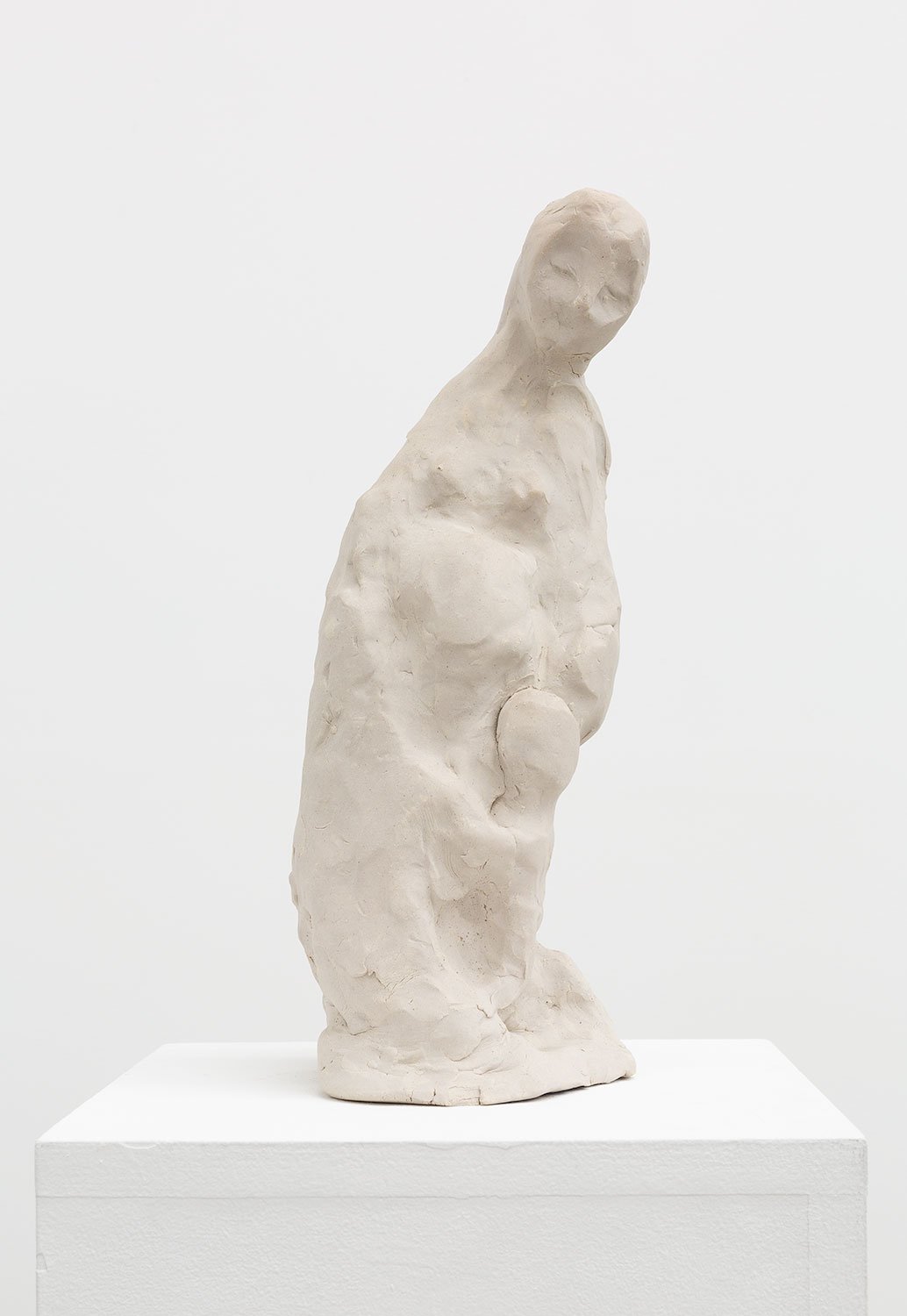NINA SANADZE
HANA AND CHILD
8 July - 5 August 2023
About a year ago, Nina Sanadze inadvertently came across a black-and-white image of a mother embracing her young child while a uniformed man pointed his gun at them at close range: the ‘Ivanhorod Einsatzgruppen photograph’. Upon further investigation Sanadze realised that this photograph was taken in 1942 in Ivanhorod, Ukraine, a town less than 50 km from where her maternal great-grandmother, Hana, along with three of her children, Misha (aged 14), Efim (aged 12), and Rachael (aged eight), were murdered by Nazis in the same manner. In the absence of any photos of them, this image could be Hana.
In conjunction with witnessing the footage of Ukrainian families under siege in the Russia-Ukraine war, for Sanadze, the sight of this haunting historic photograph transformed the unspoken familial history into something tangible and demanding immediate attention. Since then, Sanadze has devoted herself to crafting an immense installation composed of more than 300 unique ceramic sculptures depicting mothers with their children. Hoping to convey the magnitude of this historical event and breathe life into it by making it visceral and visual, just as the photograph had done for her.
Known for large-scale installations using replicas and original artefacts, Sanadze’s work has been described as “conceptual art dressed in a classical form”. On this occasion, Sanadze creates an emotive interpretation of a single black-and-white photograph, while also referencing and subverting iconography of the Madonna and child.
Sanadze uses an impressionistic style of sculpting clay, creating these figures from memory, and focusing on the transmission of emotion rather than representational form, to create raw and crudely-hewn depictions of mothers with children.
Installation view
Photograph: Christian Capurro
-
Nina Sanadze was born in Georgia (former USSR) in 1976, immigrated to Russia as a refugee in 1992, and immigrated to Australia in 1996. She has an Honours Degree, Graphic Design & Book Illustration from Moscow State University of Publishing and a Bachelor of Fine Arts (Honours) from the Victorian College of Arts.
Sanadze is currently a Gertrude Contemporary resident artist. She is the winner of the 2021 Churchie Emerging Art Prize, 2018 Incinerator Art Award: Art for Social Change, 2019 Victorian College of the Arts Bus Projects Award, and 2019 and 2020 Fiona Myer Victorian College of the Arts Award.
Sanadze has held solo exhibitions at Kunstall 3,14, Norway (2023), the 3rd Tbilisi Triennial, Georgia (2018), Daine Singer (2021), Point Nepean Quarantine Station (2022), Victorian College of the Arts (2020), Second Space Projects (2020), Cathedral Cabinet (2020), and Melbourne’s Living Museum of the West (2018). She has undertaken public art projects including the public art event, Returning the Names, together with Memorial Italia, held at the Venice Biennale, Italy (2022), Call to Peace (2022), temporary public art funded by the City of Port Phillip, South Melbourne, Blockage (2019), three public art installations in St Kilda, Melbourne. Sanadze has also participated in group exhibitions at the La Trobe Art Institute, MADA gallery, Margaret Lawrence Gallery, Living Museum of the West, ACE Open, Institute of Modern Art, Meat Market and Gertrude Glasshouse, George Paton Gallery and Buxton Contemporary Public Screen.
“Why make something that is so hard to face? Why write about something so unfathomable? Sontag states, “as objects of contemplation, images of the atrocious can answer to several different needs. To steel oneself against weakness. To make oneself more numb. To acknowledge the existence of the incorrigible.” For Nina, its not about numbness or memorialising, it is important that we face the brutality of our past, so we don’t repeat these same atrocities. ”
“I created these sculptures in my home studio, in an intimate family space. My mother, Mila, who lives nearby, offered to help to cope with the sheer volume of work. We ended up sitting in the studio side by side, every day, surrounded by hundreds of sculptures of mothers and children. I was sculpting the figures and my mother hollowing them to prepare for firing. A symbolic action of making and unmaking in an effort to recreate an image of a grandmother she never met. Each sculpture a love letter.”
IMAGES
“I wanted to show love and immense tenderness between each mother and child in their last moments, not the violence.”
































